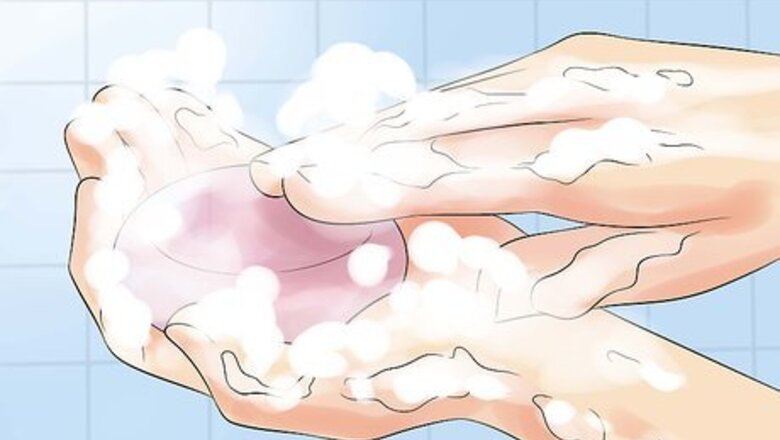
views
X
Trustworthy Source
Cleveland Clinic
Educational website from one of the world's leading hospitals
Go to source
Nebulizers are often recommended for young children, people suffering from asthma, or people who have difficulties with ordinary inhalers. Keeping a nebulizer clean is very important — since your medicine has to pass through it on the way to your lungs, an unclean nebulizer can have you inhaling germs, leading to infection.[2]
X
Research source
Quick-Cleaning Your Nebulizer
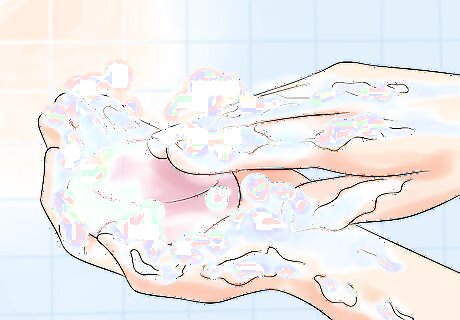
Wash your hands. Before beginning, it's a good idea to take a few moments to wash your hands with soap and water or an alcohol-based sanitizer. Washing your hands kills bacterial and other harmful microorganisms on them. Since this method for cleaning the nebulizer doesn't use any soap, you won't want to accidentally transfer these onto the nebulizer by cleaning it with dirty hands. See How to Wash Your Hands for tips on getting your hands as clean as possible. If you have a germ-sensitive job (e.g., healthcare worker), you may want to use the more conservative WHO guidelines for hand-washing.
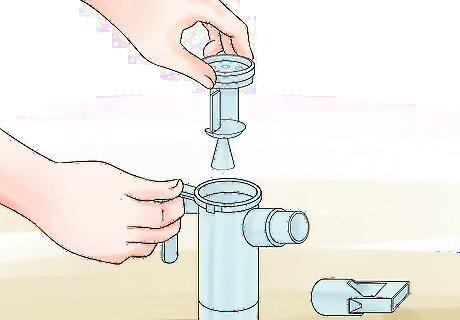
Take the nebulizer apart, if possible. Most nebulizers consist of a mask or mouthpiece, a section of tubing, a few connecting pieces, and a compressed air machine. Gently take these pieces apart from each other. You only need to clean one or two pieces, not the entire machine, so don't leave them connected unless your nebulizer does not come apart. Most nebulizers come in one of two varieties: atomizer jet and ultrasonic. Atomizer jets, the more common variety, use compressed air to disperse your medicine, while ultrasonic nebulizers vibrate the liquid medicine with soundwaves to make it into a vapor. While these two nebulizers use different mechanisms to operate, they both use similar mouthpiece/tubing setups to disperse the medicine, so the cleaning instructions are virtually identical for both. Some nebulizers (like, for instance, smaller portable models) may have slightly different configurations. In these cases, do your best to remove the pieces that can be removed. Nearly all nebulizers will have some sort of mouthpiece or mask — this is the most important thing to remove and clean.
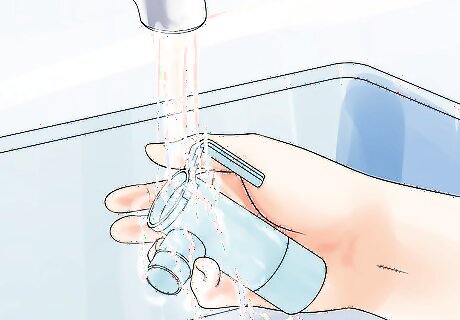
Wash the cup or mouthpiece with warm water. Run some warm (not hot) water. Rinse the mouthpiece and any T-shaped connecting pieces that attach to it under the water for about half a minute to one minute, making sure that every part of these pieces gets rinsed. Do not rinse the tubing or the compressed air machine with water. The tubing is difficult to dry and the machine itself is not intended to be cleaned this way. You can, however, wipe down the outsides of these pieces with a towel.
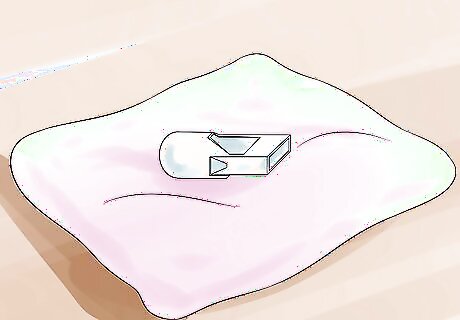
Let air dry. Shake the excess water off of your mouthpiece (and any T-shaped connector piece you washed) and set it on a clean towel. Allow the water to evaporate naturally. This can take anywhere from 20 minutes to an hour or two, depending on the climate.
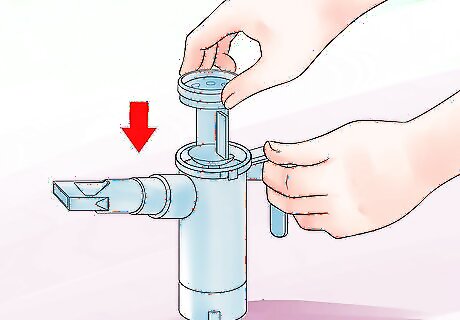
Put the machine back together and store. When the pieces are dry, put the entire nebulizer back together. Run air through the machine for about 10 to 20 seconds to remove any water inside. At this point, you can disconnect the mouthpiece and tubing from the compressed air machine and store both separately. A good place to store the mouthpiece and tubing is in a clean ziplock bag. The compressed air machine can be covered with a sheet or towel to keep dust off of it.
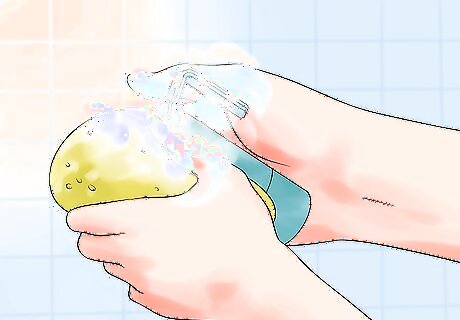
Optionally, wash pieces in soapy water at the end of the day. Some (but not all) nebulizers will recommend that you disinfect the pieces after each day of use. Consult your model's instructions to determine whether you need to do this. Follow the steps below for this intermediate cleaning method, which is nearly the same as the steps above, but using soap: Remove the nebulizer's mouthpiece and any T-shaped connector pieces attached to it. The tubing and compressed air machine should not be washed. Run warm water. Use mild dishwashing soap or detergent to wash the pieces for about half a minute to one minute, making sure that every part of the pieces is cleaned. Rinse for about half a minute to remove soap. Shake the excess moisture off and air-dry on a clean towel.
Deep-Cleaning Your Nebulizer
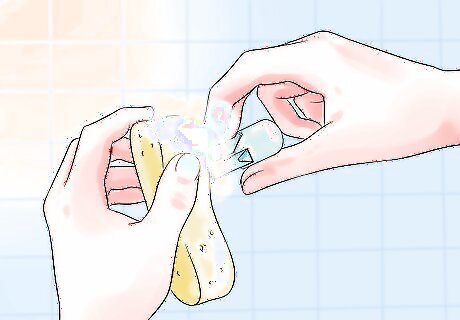
Wash the equipment as directed above. To ensure long-term cleanliness and keep your nebulizer in good working order, it's important to give it regular deep cleanings to kill any bacteria or microorganisms your normal cleaning regimen failed to kill. After you finish using your nebulizer, start by washing it as you normally would. See the section above for more details. Most manufacturers recommend performing a deep cleaning once or twice per week. If you are unsure how often to deep clean your nebulizer, consult the instructions that came with it.
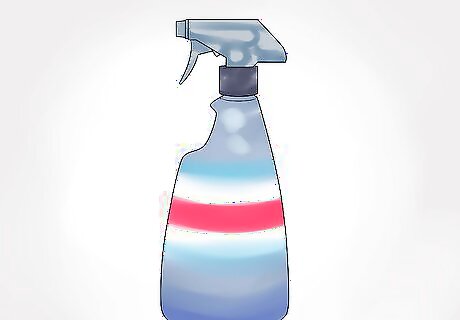
Get a disinfectant solution (or make your own.) Different nebulizer manufacturers will recommend using different products for deep cleaning sessions. Some nebulizers will have a cleaning solution included with them, others will recommend that you buy a commercial cleaning solution from the pharmacy, and others will recommend that you make your own — consult your nebulizer's instructions to be sure which is best for you. To make your own cleaning solution, mix one part white vinegar to three parts water. For example, you might combine 1/2 cup of white vinegar with 1 1/2 cups of water.
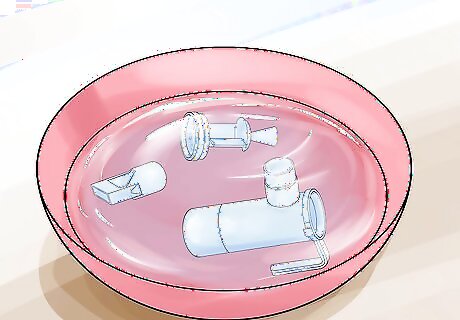
Soak your pieces. Put the mask and any T-shaped connector piece in a clean bowl and cover them with the cleaning solution until they are completely submerged. Leave them to sit so that the solution can clean them thoroughly. The amount of time your nebulizer's manufacturer will recommend for soaking can vary from model to model. Typically, however, this is around 20 minutes to an hour. Once again, don't soak the tubing or the compressed air machine.
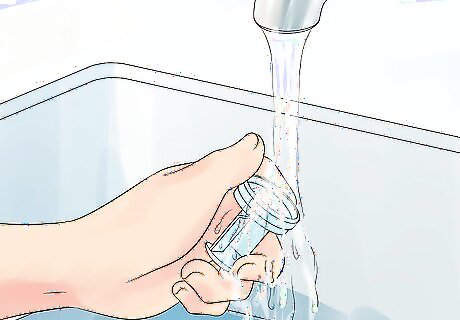
Rinse well and air dry before storing. Once the nebulizer has finished soaking, finish the cleaning process the same way as you would for a quick-clean in the method above. See below: Remove the pieces from the solution and rinse them thoroughly with warm running water for at least 30 seconds. Shake the excess water off and set the pieces on a clean towel. Allow the pieces to air dry. When dry, you may re-connect the pieces and run the compressed air machine briefly to remove any water caught inside them. Store the tubing and mask in a clean ziplock bag. Cover the compressed air machine with a towel before storing it. Dispose of your leftover cleaning solution — don't reuse it.


















Comments
0 comment